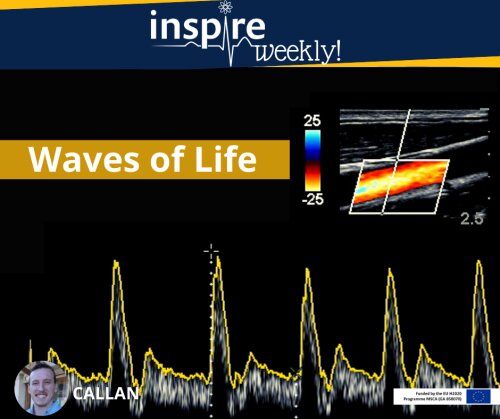26/05/2021 - Callan (ESR#10)

Ultrasound imaging is a common practice in clinical setups which has been around since the late 1950’s1. This technology is frequently used in pregnant women to gain insight into anatomical imaging2. However, our lab has implemented this technique for functional imaging of the cardiovascular system in rodents. The spatial resolution of conventional ultrasound imaging systems used in the clinic provides a barrier for pre-clinical imaging of rodents (rat or mice) given their small size. To overcome this challenge we will make use of transducers which have a much higher frequency to produce higher resolution images3. More specifically when investigating the aortic regions where the diameters (captured by B-Mode imaging) and the velocities of the blood flow (captured by Doppler imaging) will be recorded as presented in the images above. These images are then respectfully plotted side by side in order to calculate the pulse wave velocity which will provide us valuable insight into the local stiffness of the vasculature. The main goal and importance of my PhD project is for this technique to be used as a valuable tool in safety pharmacology testing for the screening of existing as well as potential new drug candidates.
References:
- Sprawls P. The Physical Principles of Medical Imaging, 2nd Ed. 1995, Medical Physics Pub. (Madison, Wis).
- Liff I, Bromley B. Fetal Anatomic Imaging Between 11 and 14 Weeks Gestation. Clin Obstet Gynecol. 2017 Sep;60(3):621-635. doi: 10.1097/GRF.0000000000000296. PMID: 28742595.
- Moran, C. M. and A. J. W. Thomson (2020). Preclinical Ultrasound Imaging—A Review of Techniques and Imaging Applications.Frontiers in Physics 8(124).